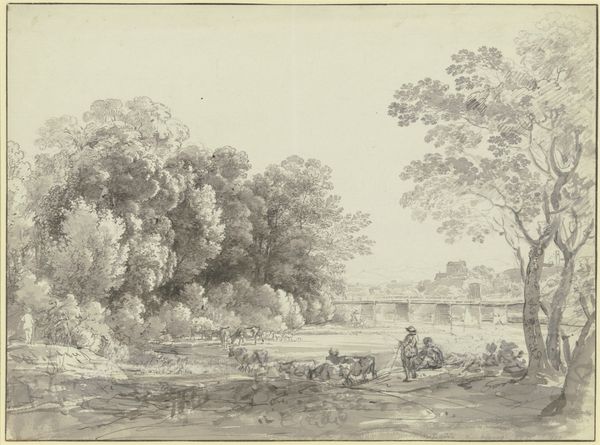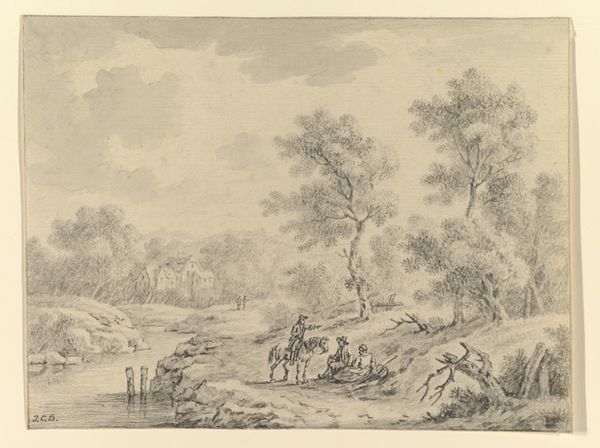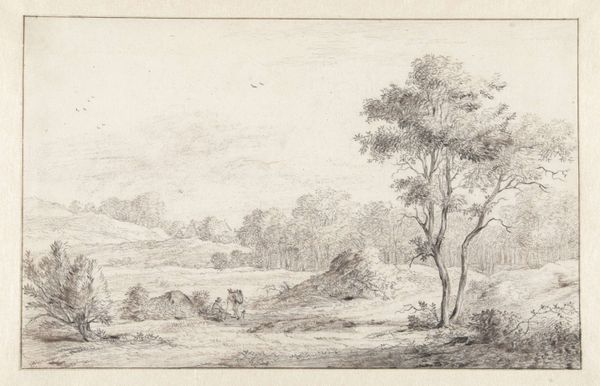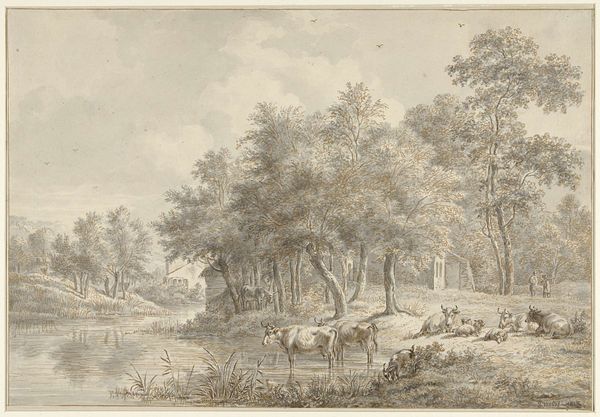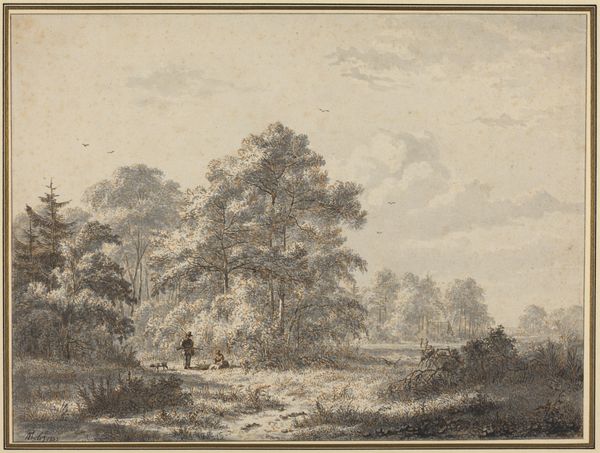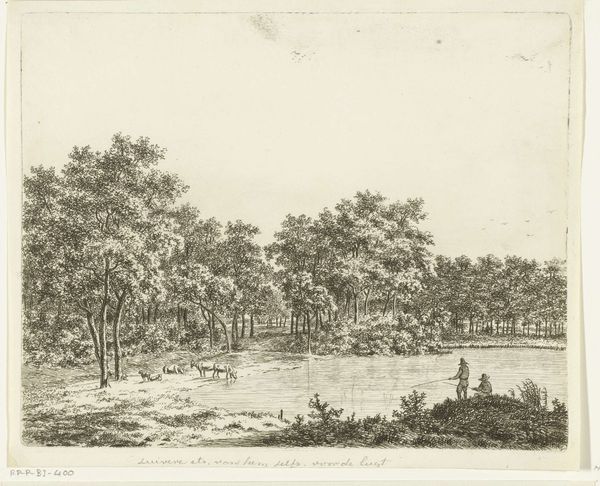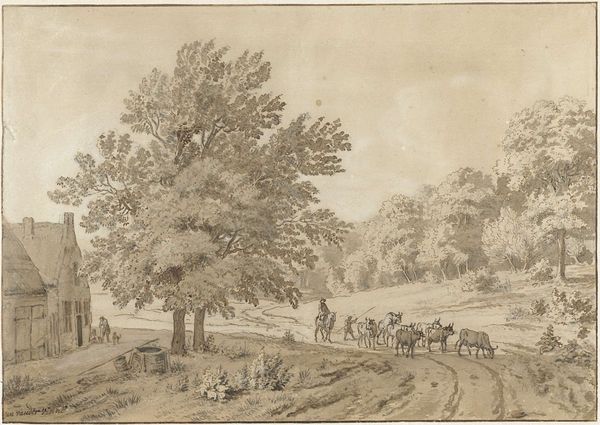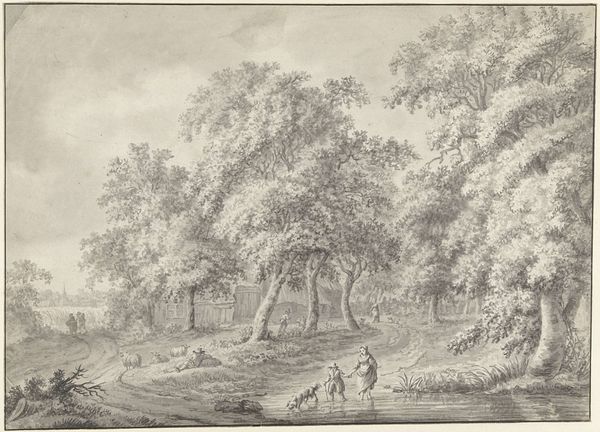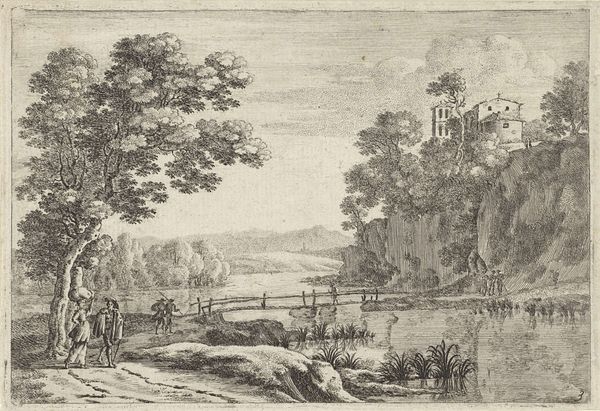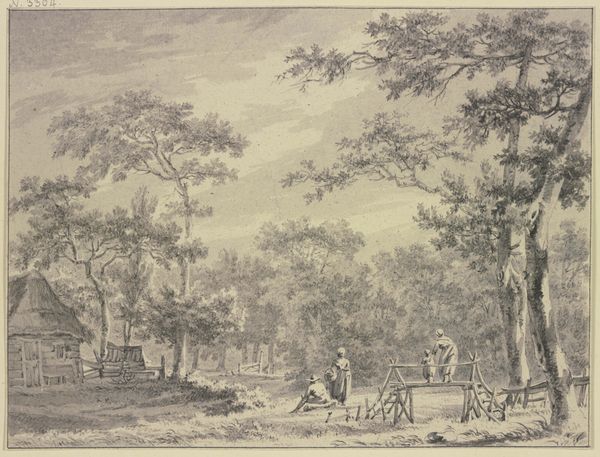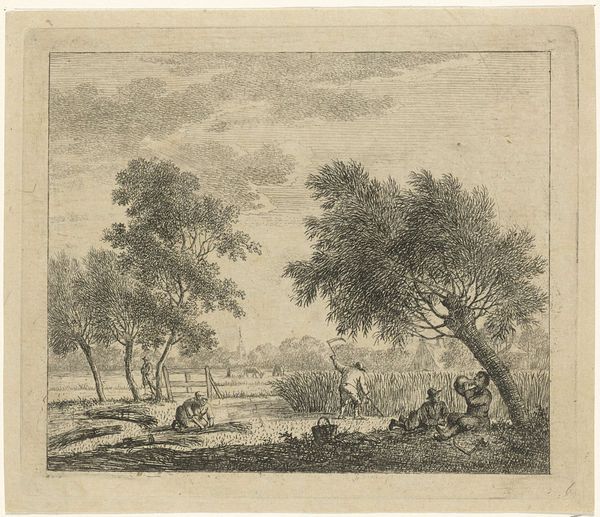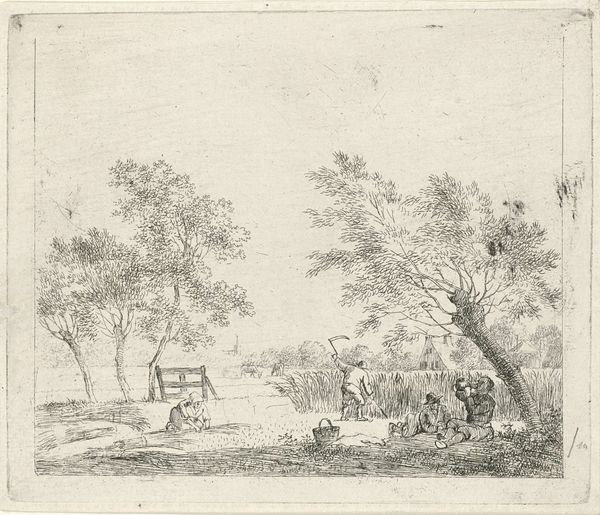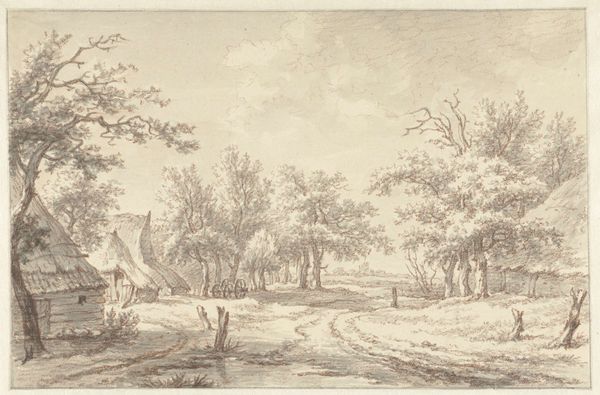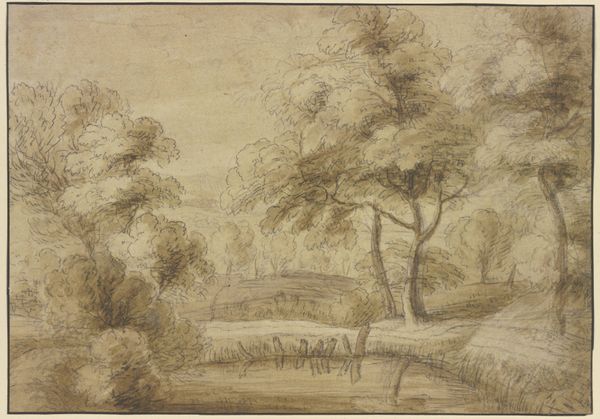
Landschap met bomen, ruiters en enkele koeien in een drenkplaats 1709 - 1753
0:00
0:00
#
pencil drawn
#
amateur sketch
#
light pencil work
#
pen sketch
#
pencil sketch
#
incomplete sketchy
#
etching
#
pen-ink sketch
#
pencil work
#
watercolor
Dimensions: height 208 mm, width 296 mm
Copyright: Rijks Museum: Open Domain
Curator: Here we have "Landscape with Trees, Riders and Some Cows in a Watering Place," created by Jan Laurensz. van der Vinne, sometime between 1709 and 1753. It appears to be an ink and watercolor drawing. Editor: It's a quiet piece. The monochrome palette creates a sense of stillness, even with the figures and animals populating the scene. The composition feels very balanced. Curator: Balance is key here. Notice how the artist uses line weight and tonal variations to create depth. The strong verticals of the trees anchor the composition, while the lighter washes suggest atmospheric perspective. This is also a wonderful example of 18th-century Dutch landscape drawing. Editor: How might social or economic shifts affect the style here? It seems more personal, more naturalistic, and less allegorical than earlier Dutch landscapes. Curator: That’s astute. During this period, we see the rise of a merchant class with leisure time, who perhaps sought less grandiose, more intimate depictions of the natural world. Van der Vinne was documenting the visible landscape rather than attempting some form of history painting disguised as nature. The very materiality of the watercolor and pen contributes to this lightness, an accessible way to depict leisure. Editor: The almost sketched, seemingly "unfinished" look really emphasizes immediacy. It suggests a moment captured, not an idealized or overly constructed scene. Did it feel radical at the time to present something this seemingly informal? Curator: Precisely. There would have been a shift from grand pronouncements towards more individualized sensory experience. It echoes the movement toward empirical observation in scientific and philosophical spheres during that time. A wider audience found this kind of observation comforting. The everyday scenes reflected the audiences’ growing aspirations for private life, nature walks, family outings. Editor: I'm struck by how this unassuming work invites you to slow down, to consider the everyday beauty around us. Curator: Yes, it exemplifies a move toward appreciating the here and now. The artwork reminds us that quiet contemplation can be just as profound as grand pronouncements.
Comments
No comments
Be the first to comment and join the conversation on the ultimate creative platform.
